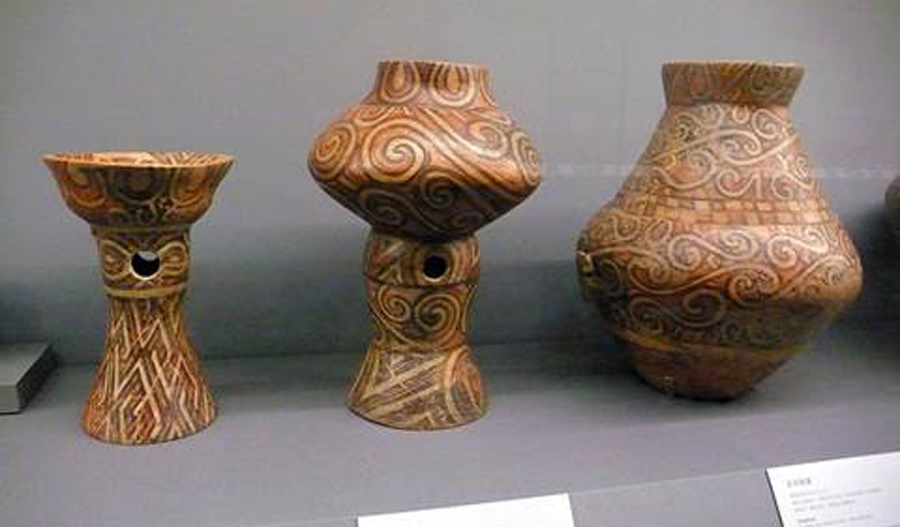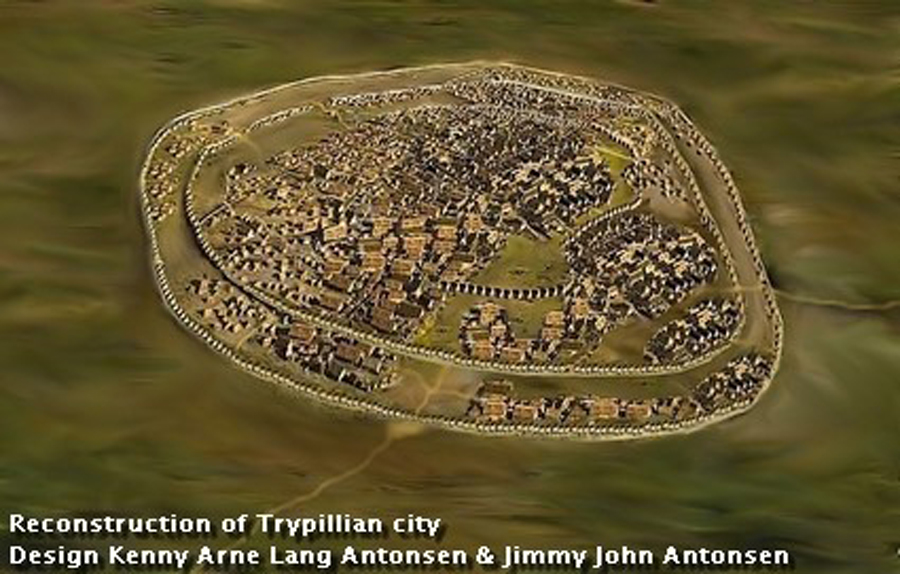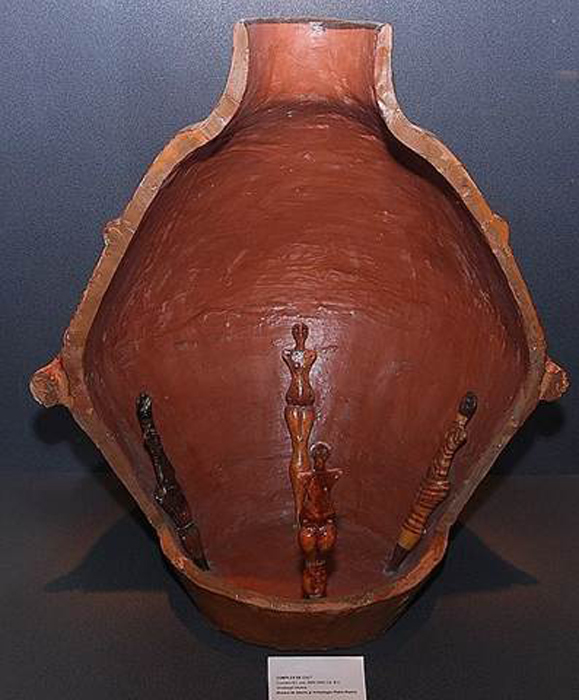Many of the cultures that echo through the ages are remembered for one principal reason: they left behind ruins. The great civilizations from history as we see them are the ones who built in stone, and whose architecture has stood the test of time.
But there are many other civilizations hidden between the Egyptians and Greeks, the Persians and Romans, who had faded to obscurity because they chose other, less durable building materials such as wood.
And then there are those who actively destroyed their legacy, notably the mysterious Cucuteni Trypillia culture. These ancient Europeans built sophisticated buildings only to burn them down.
For millennia, from 5,400 BC to 2,700 BC this neolithic culture used to build organized and large cities in what is present day Moldova and Romania, north of the Black Sea. And, every 60 to 80 years, they would burn their cities intentionally to rebuild and relocate.
This practice of the ancient culture is very puzzling and gives rise to a number of questions among people. Was it a religious practice, or did they have any specific problem? Put simply, why did the Cucuteni Trypillia burn their homes so regularly?
Lifestyle and Livelihood
The Cucuteni Trypillia culture is believed to have existed for about 2,750 years. During these years, they were fairly static and stable, occupying a vast area of nearly 350,000 square kilometers with their densely populated settlements.
In terms of agriculture, the Cucuteni Trypillia culture was very advanced for the neolithic. They harvested and planted wheat, peas, legumes, and barley. Harvesting crops, cultivating the soil, and tending livestock was most probably the main occupation of a majority of people of the culture.
The surviving evidence suggests that every household had members in the family who would go to the fields in order to raise crops. However, they were also hunter gatherers and would hunt animals in the dense forests of the region.
- What is Rujm el-Hiri? Puzzling Labyrinth of the Golan Heights
- Göbekli Tepe: Ancient Temples of Turkey
Since most of the houses were self-sufficient, there appears to have been very little need for trading. It seems the first societies of the Cucuteni Trypillia did not have any social stratification, or organized division of labor.

In addition to the agricultural work, the Cucuteni Trypillia culture also created pottery and textiles. According to the archaeological evidence, they possessed excellent skills in pottery making. They worked with clay in order to create statues, pottery, and other popular figures. They were also proficient in crafting hooks and jewelry pieces from copper.
A Monotheistic Matriarchy?
Women were considered to be the head of the household. The men in the culture were engaged in making tools, domesticating animals, and hunting. Evidence shows that the men domesticated pigs, sheep, goats, and cattle. There is some evidence that shows they also domesticated horses.
The men went out hunting with the use of traps and tools like clubs, spears, and bow and arrows. They even made use of techniques such as camouflaging in order to track animals and hunt them. The animals that were mainly hunted by them were wild boar, various species of deer, fox, and aurochs.
But meat from hunting was supplementary, and their diet mainly consisted of cereal grains. They grew oats, club wheat, barley, hemp, rye, and proso millet. All of them were baked and made into bread. In addition to grains, they even cultivated fruits as well as legumes like cherry plums, apricots, beans, peas, and grapes.
The Cucuteni Trypillia culture believed in a female deity known as the Great Goddess. According to the archaeologists, the special buildings located at the center of the settlement were sanctuaries sacred to this figure. Could this be an extremely early form of monotheism?
The Building Burners
One of the most interesting yet mysterious aspects of the Cucuteni Trypillia culture is the manner in which they treated their structures and settlements. These were not simply dwellings but sophisticated, multi-story buildings constructed using wood.

The Cucuteni Trypillia stone axes, and later copper tools, in order to cut down trees for construction. They lined the interior with ornamental paintings of white and red, with clay altars and benches. They were believed to offer protection to the inhabitants from the evil spirits.
A number of temples, individual dwellings, and public structures have been discovered, all of which were well-constructed and show evidence of sophisticated planning. These were Europe’s first cities, built before the great civilizations of the Bronze Age Mediterranean and Middle East, and between 4,000 and 3,500 BC held up to 50,000 people.
However, the Cucuteni Trypillia saw these as temporary structures, and throughout their long history their cities were ritualistically burned down to the ground every 60 to 80 years, before relocating or rebuilding. Researchers and archaeologists have uncovered nearly thousands of burned statues, structures, vessels, tools, and cremated remains of animals and humans.
Why Burn These Cities?
There are a number of theories relating to the repeated burning of the settlements. One of the theories suggests that the homes were burnt accidentally.
The close proximity of the homes and the presence of textiles, grains, and other highly combustible materials in the homes seem to support the theory. However, the repeated burning of the homes makes it difficult to believe that it was due to some accident.
According to Evgeniy Yuryevich Krichevski, a Russian archaeologist, weatherproofing was the reason for the burning of the houses. He proposed that the houses were burned in order to strengthen the wall structures and properly insulate the floors against mold and dampness.

Yet another theory suggests that the burning of the homes can be attributed to the attacks made by enemy raiders. Another hypothesis states that the structures and settlements were burned in order to demolish the buildings and create more space.
Some researchers even believe that the burning of the settlements was the way in which the people of Cucuteni Trypillia culture honored their dead. Instead of creating a tomb for the deceased, they burned the entire home in which the deceased person used to live. While there exist so many theories, the real reason may never be known.
One thing is clear: the settlements and dwellings of the Cucuteni Trypillian culture were not built merely for the purpose of survival. Their repeated burnings lasted for millennia, far longer than it would take to find a practical solution which would allow them to keep their cities intact.
Clearly this practice meant something important to these people. This is what has come to define them in modern eyes, but as to why they did it for so many centuries, on that they are silent.
Top Image: What made this culture burn their cities for millennia? Source: Serikbaib / Adobe Stock.
By Bipin Dimri